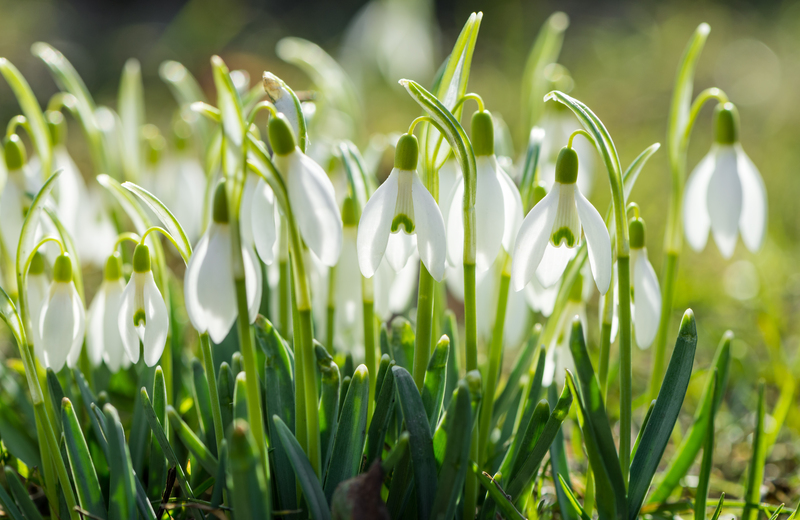Transform Your Space with Healthy Orchids
Posted on 20/05/2025
Orchids are often synonymous with elegance, beauty, and tranquility. These exquisite flowering plants have the power to transform any interior space--from a cozy apartment to a sprawling office--into a vibrant sanctuary. But growing and maintaining healthy orchids can be a challenge without the right knowledge. In this comprehensive guide, we'll uncover everything you need to know to successfully cultivate and care for orchids, thereby elevating your home or workspace with the majestic allure of these stunning plants.
Why Orchids? The Allure of These Exotic Blooms
There's a reason why orchids have long been a top choice for interior decor:
- Variety: Over 25,000 known species and over 100,000 hybrids offer limitless options for every taste.
- Date Back Millions of Years: Orchids are among the oldest flowering plants, symbolizing strength, beauty, and endurance.
- Air Purification: Many orchid species help improve air quality by removing toxins and releasing oxygen.
- Aesthetics: Their delicate petals, unique forms, and vivid colors naturally draw the eye, making them natural focal points in any room.
- Long-Lasting Blooms: With proper care, orchid blossoms can last for months, unlike many other flowering indoor plants.
Simply put, healthy orchids are more than a decorative addition--they're a lifestyle upgrade with far-reaching benefits for your well-being and surroundings.

How Healthy Orchids Transform Your Living and Working Spaces
Adding orchids to your space goes beyond mere aesthetics. Here's how healthy orchid plants can revitalize your environment:
1. Enhancing Air Quality
Healthy orchids purify the air by absorbing carbon dioxide and releasing oxygen. Some varieties, like the Phalaenopsis and Dendrobium, are particularly adept at filtering toxins like xylene and toluene commonly found in household materials.
2. Mood and Productivity Boost
Did you know that the presence of greenery can lower stress and increase productivity? Orchids, with their serene beauty, have been shown to lift moods and reduce anxiety--ideal for both home offices and living areas.
3. A Statement of Style
From minimalist to maximalist, orchids fit into almost any design theme. Place them in decorative pots, hanging baskets, or even wall-mounted displays to make a memorable impression.
4. Connection to Nature
Amidst a fast-paced urban lifestyle, nurturing orchids provides a soothing daily ritual, reconnecting you with nature and fostering mindfulness.
Choosing the Right Orchids for Your Space
Not all orchids are created equal. To enjoy thriving, healthy orchids, consider these factors before making your selection:
- Light Availability: South- or east-facing windows are perfect for most orchids. If you lack natural sunlight, opt for varieties tolerant of lower light, such as the Phalaenopsis.
- Humidity Levels: Most orchids prefer 50-70% humidity. For dry environments, misting or using a humidity tray is recommended.
- Size: Compact varieties suit smaller apartments, while larger types like the Cattleya shine in spacious interiors.
- Blooming Frequency: Some orchids, like Oncidium and Dendrobium, bloom multiple times a year--ideal for year-round appeal.
Popular easy-care orchid varieties include:
- Phalaenopsis (Moth Orchid): Renowned for long-lasting, spectacular blooms and minimal fuss.
- Dendrobium: Noted for abundant, clustered blossoms in vibrant hues.
- Oncidium (Dancing Ladies): Known for smaller, bright-yellow flowers that resemble clusters of tiny dancers.
- Cattleya: Called "The Queen of Orchids," these produce famously fragrant, large blooms.
The Essentials of Orchid Care for Maximum Health and Longevity
1. Light Requirements
Healthy orchids require the right balance of light--a delicate dance between too much and too little. Placement is crucial:
- Bright, Indirect Sunlight: Avoid direct afternoon rays, which can scorch orchid leaves, causing telltale yellow or brown spots.
- Window Placement: East- or north-facing windows are best. If light is insufficient, supplement with LED grow lights for optimal growth.
2. Watering Your Orchids
Overwatering is a common pitfall. Here's how to ensure the right moisture levels:
- Soak and Dry: Allow the potting mix to dry slightly between waterings. Typically, water once per week, adjusting for temperature and humidity.
- Tip: Use tepid, distilled, or rainwater. Tap water with high minerals may harm sensitive roots.
- Drainage: Orchids must never sit in stagnant water--always empty saucers after watering.
3. Perfect Potting Mix
Unlike most houseplants, orchids require a fast-draining, airy substrate. A typical orchid mix combines bark chips, perlite, charcoal, and sometimes sphagnum moss. Avoid regular potting soil, which retains too much moisture and suffocates roots.
4. Feeding and Fertilizing
To keep orchids healthy and promote strong blooms:
- Balanced Orchid Fertilizer: Use a "weakly, weekly" solution--dilute orchid-specific fertilizer and apply during watering, especially when the plant is actively growing.
- Flush the potting mix monthly with clear water to prevent fertilizer salt buildup.
5. Temperature and Humidity
Orchids generally prefer:
- Daytime: 65-80?F (18-27?C)
- Nighttime: 60-70?F (15-21?C)
- Humidity: 50-70% (use a room humidifier or humidity tray as needed)
6. Pruning and Maintenance
- Remove spent blooms and dead leaves to promote airflow and reduce disease risk.
- Repot every 1-2 years, especially if roots crowd the pot or the mix has degraded.
- Check roots regularly--healthy roots are plump and green or white.
Troubleshooting Common Orchid Problems
Yellow Leaves
This can result from overwatering, excessive direct light, or normal leaf shedding in older leaves. Check your watering routine and adjust lighting conditions if necessary.
No Blooms
Lack of flowering could indicate insufficient light, over-fertilization, or a need for a rest period. Ensure your orchid receives the recommended light and follow the tips above for feeding and temperature control.
Pests and Disease
- Mealybugs and Scale: Remove pests manually or with insecticidal soap.
- Root Rot: Remove affected roots and repot in fresh orchid mix. Reduce watering frequency.
Creative Ways to Display Healthy Orchids
Once you've mastered orchid care, turn your attention to creative displays that show off their beauty:
- Hanging Orchids: Mount epiphytic orchids on driftwood or in hanging baskets for a floating garden effect.
- Orchid Terrariums: Arrange miniature orchid species with moss and pebbles under glass cloches for a lush, self-contained vignette.
- Tabletop Centerpieces: Combine multiple orchids of varying colors and heights in an elongated, decorative tray for dining or coffee tables.
- Wall Gardens: Attach orchid holders to a vertical frame or wall-mounted grid for a living floral wall that acts as living art.
Integrating Orchids with Your Interior Design
Orchids can harmonize with every decor style, lending their charm to different rooms:
Living Room:
A lavish Cattleya or a cluster of Moth Orchids on the mantelpiece or coffee table instantly adds sophistication and a pop of color.
Bedroom:
Choose calming white or pastel Phalaenopsis by the nightstand to promote tranquility and restful sleep.
Office or Study:
Position a single stemmed mini-orchid by your monitor to reduce fatigue, increase focus, and infuse your workspace with energy.
Bathroom:
Miniature orchids thrive in naturally humid bathrooms--display them on shelves or windowsills for a fresh, spa-like touch.
The Best Orchid Health Hacks: Pro Tips from the Experts
- Rotate Orchids Weekly: This ensures even light distribution for symmetrical growth.
- Shower Method: In the absence of pests and disease, give your orchids a gentle rinse in the shower to mimic monsoon rains and wash away dust.
- Group Orchids Together: Placing several orchids nearby increases ambient humidity.
- Observe, Don't Over-Intervene: Healthy orchids often thrive best when left undisturbed, with minimal but consistent care.
Seasonal Orchid Care Checklist
Spring and Summer: Increase watering and feeding as the plant is actively growing. Ensure adequate airflow to prevent fungal infections.
Autumn and Winter: Reduce watering frequency, allow cooler nighttime temperatures to trigger blooming in many species, and monitor for pests indoors as windows remain closed.

Frequently Asked Questions on Growing Healthy Orchids
- How often do I need to repot my orchid?
Repot orchids every 1-2 years or if you see roots growing beyond the pot or the potting mix decomposing. - Can orchids rebloom? How?
Yes! Give them time to rest, maintain correct light and temperature, and fertilize according to growth stage. Cut flower spikes just above a node or at the base depending on the variety after bloom. - Do orchids need special pots?
Potting containers with drainage holes are essential. Special orchid pots with slits promote airflow and prevent root rot.
Conclusion: Let Healthy Orchids Transform Your World
Orchids aren't just another houseplant--they're an experience. With careful attention to their unique needs, you can cultivate robust, healthy orchids that will transform your space, boost your mood, and purify your air for years to come. From choosing the right variety to mastering the art of orchid care and creative displays, the journey is as rewarding as the result.
Start your orchid adventure today, and discover how these captivating blooms can redefine your home or office with enduring beauty, style, and well-being.

